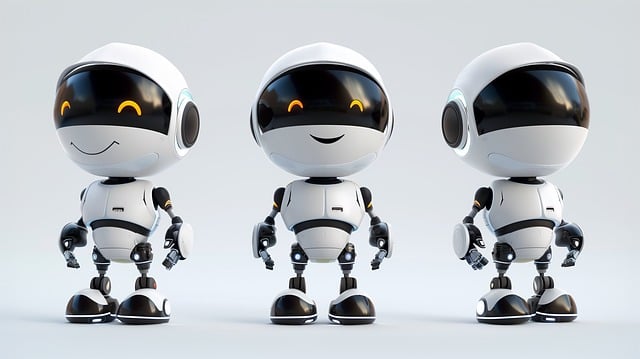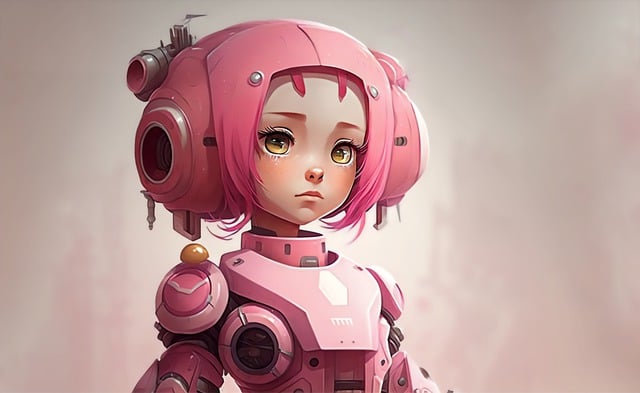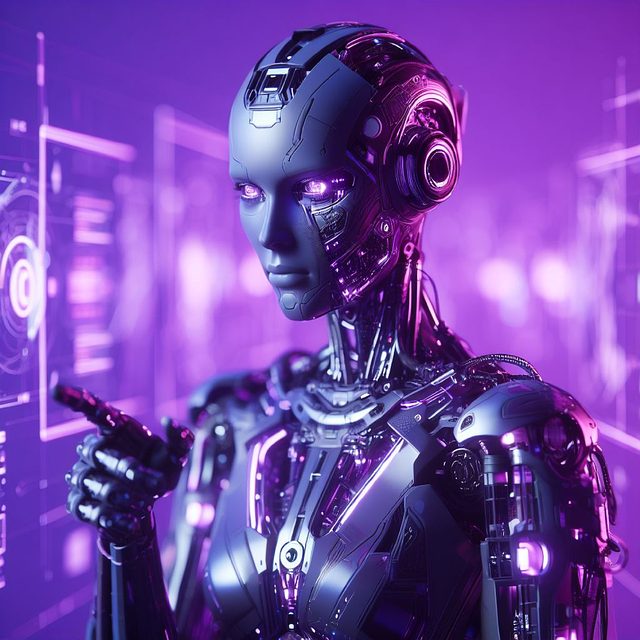Chatbot AI represents a significant advancement in artificial intelligence, mastering human-like conversations through text or voice. It operates using sophisticated natural language processing (NLP) and machine learning algorithms, which enable it to understand and generate human language with increasing proficiency. The development of effective chatbots involves a blend of predefined rules and continuous learning from extensive datasets on platforms like Google's Dialogflow, Microsoft's Bot Framework, or Rasa. These tools assist developers in crafting conversational flows, interpreting user inputs, and providing relevant responses. A well-designed conversation framework is essential for meaningful interactions, ensuring the chatbot handles a wide range of scenarios and maintains context while staying consistent with your brand's voice. The technology stack chosen for chatbot AI is critical for both current functionality and future scalability; Python, with libraries like NLTK and TensorFlow, is often preferred due to its adaptability and support for NLP and machine learning tasks. Integration with cloud services like AWS, Azure, or Google Cloud Platform further enhances the chatbot's capabilities by providing additional functionalities like speech recognition and sentiment analysis. As AI continues to evolve, chatbots become more sophisticated, offering tangible benefits in customer service, operational optimization, and creating immersive user experiences across various sectors. Continuous updates and maintenance are key to keeping chatbot AI systems effective and relevant, ensuring they can adapt to new advancements and user expectations.
Embarking on creating a chatbot can be an exciting venture into the realm of AI, offering endless possibilities for engaging users in meaningful conversations. This article demystifies the process by guiding you through the fundamentals of chatbot AI, from conceptualizing your chatbot’s design to deploying and fine-tuning its performance. We’ll explore the key components of a successful chatbot, including selecting an appropriate technology stack and utilizing advanced NLP techniques for natural interaction. By following this comprehensive guide, you’ll be well-equipped to build and implement a chatbot AI that meets your specific needs and enhances user experiences.
- Understanding the Basics of Chatbot AI: An Overview
- Designing the Conversation Framework for Your Chatbot
- Choosing the Right Technology Stack for Your Chatbot Project
- Training Your Chatbot with Natural Language Processing (NLP) Techniques
- Deploying and Testing Your Chatbot: Ensuring Effective Interaction and Performance
Understanding the Basics of Chatbot AI: An Overview

Chatbot AI represents a significant advancement in the realm of artificial intelligence, offering the ability to simulate human-like conversations with users through text or voice commands. At its core, chatbot AI is built upon natural language processing (NLP) and machine learning algorithms, enabling it to understand, interpret, and generate human language. The foundation of any robust chatbot AI system lies in its programming, which involves defining a set of rules for the chatbot to follow during interactions, alongside the integration of sophisticated AI models that can learn from vast datasets, improving their responses over time.
Developers typically start by selecting an appropriate platform or framework to create the chatbot AI, such as Google’s Dialogflow, Microsoft’s Bot Framework, or open-source alternatives like Rasa. These platforms offer tools and libraries that facilitate the development of conversational flows, manage user inputs, and generate coherent responses. The design process also involves crafting dialogues, training the AI with conversational data, and iteratively refining the chatbot’s understanding of context and intent to make interactions as natural and helpful as possible. As the technology advances, chatbot AI becomes increasingly adept at handling complex conversations, making it a valuable tool for businesses aiming to enhance customer service, streamline operations, or provide engaging experiences to users across various industries.
Designing the Conversation Framework for Your Chatbot

When embarking on the journey to design a conversation framework for your chatbot AI, it’s crucial to map out the potential interactions between the user and the bot. This involves defining the scope of conversations the chatbot will handle, the context it needs to understand, and the responses it should generate. A well-crafted conversation framework starts with identifying the use cases for your chatbot. Determine the types of queries it will receive, the solutions or information it needs to provide, and the tone that aligns with your brand’s voice. This framework serves as a blueprint, guiding the development of the chatbot AI’s natural language processing capabilities and its decision-tree logic. It ensures that the bot can navigate through various topics coherently and effectively, providing users with accurate and helpful responses. The design should account for both scripted dialogues and the ability to handle unexpected inputs gracefully. By implementing a robust conversation framework, you lay the foundation for a chatbot AI that can maintain context over a series of interactions, enhance user satisfaction, and ultimately, drive engagement and productivity.
Choosing the Right Technology Stack for Your Chatbot Project

When embarking on the creation of a chatbot, selecting an appropriate technology stack is pivotal to ensuring its effectiveness and scalability. The choice of programming languages, frameworks, and tools should align with your project’s objectives and capabilities of the AI you intend to integrate. For instance, Python has emerged as a popular choice for chatbot development due to its simplicity, versatility, and extensive libraries such as NLTK and TensorFlow that facilitate natural language processing (NLP) and machine learning tasks.
Incorporating AI into your chatbot through machine learning models can significantly enhance its conversational abilities. Models like GPT-3 by OpenAI or BERT from Google showcase the potential of AI in generating human-like responses. However, the complexity of these models may necessitate cloud-based solutions like AWS, Azure, or Google Cloud Platform to handle computational demands and data storage effectively. These platforms also offer additional services such as speech recognition, sentiment analysis, and intent classification, which can be integrated seamlessly into your chatbot to provide a more robust and interactive user experience. Choosing the right technology stack not only involves considering the current needs of your chatbot project but also planning for its future growth and adaptability to new AI advancements.
Training Your Chatbot with Natural Language Processing (NLP) Techniques

Incorporating Natural Language Processing (NLP) techniques into your chatbot AI development is pivotal for creating a more intuitive and human-like conversational experience. NLP equips chatbots with the ability to understand, interpret, and generate human language by leveraging computational linguistics, machine learning, and deep learning models. By training your chatbot with NLP, you enable it to process natural language inputs from users, allowing for a seamless interaction that feels natural and responsive. This is achieved through the use of algorithms that can parse syntax, recognize semantics, and understand context. The integration of NLP enables chatbots to handle a wide range of conversational scenarios, making them capable of dealing with ambiguous queries, colloquialisms, and even slang. As such, when building your chatbot AI, it’s crucial to select the right NLP models and fine-tune them with relevant datasets that reflect the language patterns and nuances of your target audience for a more accurate and effective dialogue flow.
Advancements in machine learning have led to the creation of sophisticated chatbots that can learn from interactions, improve over time, and adapt to new types of conversations. This means that the more your chatbot interacts with users, the better it becomes at understanding and responding appropriately. By continuously feeding it with a diverse set of conversational data, you can enhance its performance, making it capable of handling complex queries and providing personalized responses. It’s essential to iterate on the NLP model training process, testing different configurations and refining the chatbot’s language understanding capabilities to ensure that it operates efficiently across various platforms and devices, thereby offering a consistent and engaging user experience.
Deploying and Testing Your Chatbot: Ensuring Effective Interaction and Performance

To successfully deploy a chatbot AI, it is imperative to first choose the appropriate platform that aligns with your chatbot’s intended use case and user base. Deployment can occur on various channels such as websites, social media platforms, or even standalone applications. Once deployed, the chatbot should be integrated with a backend service capable of handling user inputs and generating responses through natural language processing (NLP) capabilities. This integration is crucial for the chatbot to function effectively, allowing it to understand and respond to user queries in real-time.
Testing your chatbot AI post-deployment is a multifaceted process that involves evaluating both its interaction quality with users and its overall performance. It’s essential to conduct thorough testing across different scenarios and dialog flows to ensure the chatbot can handle a wide range of user inputs accurately. Automated testing tools can simulate various interactions, providing data-driven insights into the chatbot’s behavior. This helps identify any issues or gaps in its understanding or response generation. Additionally, monitoring the chatbot’s performance in real-world conditions is vital to optimize its operation. Collecting user feedback and continuously iterating on the chatbot’s design and algorithms will enhance its accuracy, efficiency, and user satisfaction over time. Regular updates and maintenance are key to maintaining a chatbot AI that remains effective and engaging for users.
In conclusion, building a chatbot AI involves a multi-faceted approach that encompasses a solid understanding of the technology, meticulous design of the conversation framework, and selection of an appropriate technology stack. By leveraging natural language processing techniques during training, your chatbot can achieve a level of sophistication that facilitates effective interaction and performance. The key to success lies in the seamless integration of these components, ensuring your chatbot AI is equipped to handle a wide array of user queries with ease. Whether you’re aiming for customer service enhancement or an innovative way to engage users, mastery over the chatbot development process can lead to significant advantages in various industries. Remember, the effectiveness of your chatbot hinges on the attention to detail and continuous refinement throughout its lifecycle.
